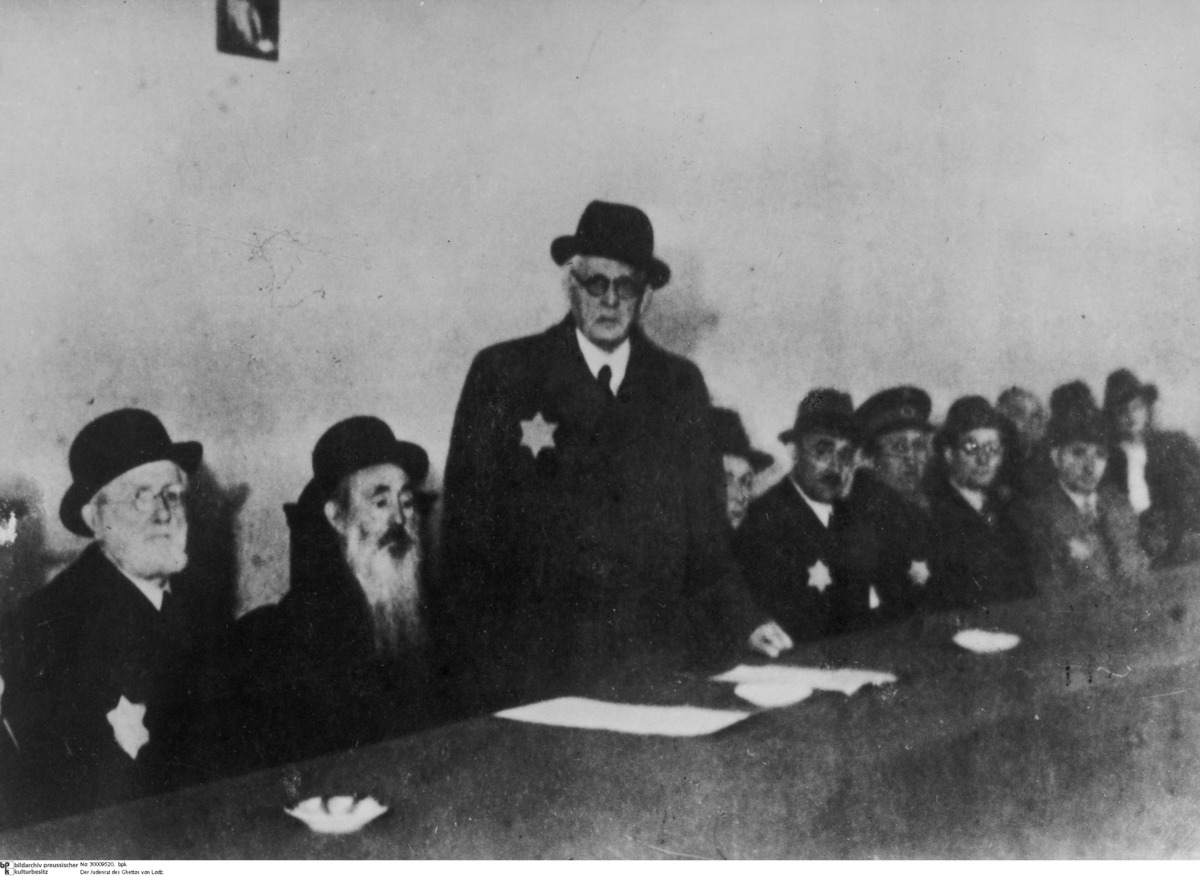Abstract
Everyday life in the ghettos was managed by the so-called Jewish
Councils. Their official task was to carry out the orders of the German
occupiers. This mostly involved drawing up lists of ghetto inhabitants
and property owners and handing them over to Nazi officials. At the same
time, however, these councils also tried to make ghetto life as bearable
and orderly as possible through welfare initiatives, health care, and
the distribution of food. But they, too, were subject to the omnipotence
of the Nazi regime, and their room for action was minimal. Council
members who opposed German orders were deposed or murdered. For example,
the first Jewish Council of the Lodz
ghetto “disappeared” in its entirety after being summoned by the
Gestapo. The photograph below shows the Jewish Council of Lodz in
1941-42; its chairman, Chaim Rumkowski, is shown standing.
To this day, the Jewish Councils continue to be regarded as
controversial institutions. A few critics condemn their cooperation with
the Nazi regime and their role in exploiting and murdering European
Jews. Others lament the corruption of a few individuals and their thirst
for power. Rumkowski, for example, behaved like a regular dictator in
the ghetto. He fueled a cult of his own personality and even had money
coined and postage stamps printed with his own image. In August 1944, he
was one of the last Jews deported from Lodz to Auschwitz, where he was
murdered.
